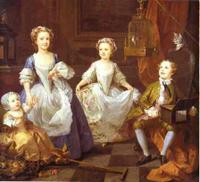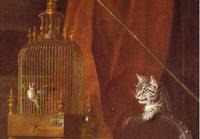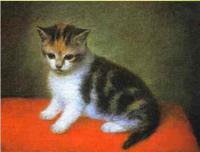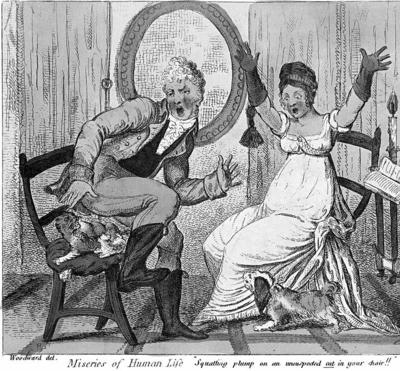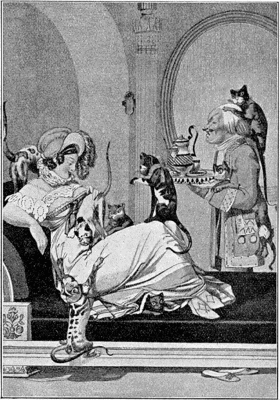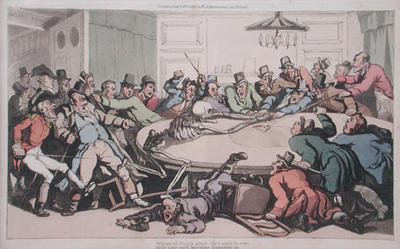 I’m staying up a bit late tonight, working on an appropriately raggedy and colorful Pippi Longstocking dress. Fortunately, this is one of the easier Halloween costumes I’ve made for my children (my sewing skills are very modest). I’ve made costumes including Dorothy and Princess Ozma of Oz, Madeline and the planet Saturn. We had a great time with that last, painting the rings together and then sprinkling on copious quantities of glitter. There’s no such thing as too much glitter!
I’m staying up a bit late tonight, working on an appropriately raggedy and colorful Pippi Longstocking dress. Fortunately, this is one of the easier Halloween costumes I’ve made for my children (my sewing skills are very modest). I’ve made costumes including Dorothy and Princess Ozma of Oz, Madeline and the planet Saturn. We had a great time with that last, painting the rings together and then sprinkling on copious quantities of glitter. There’s no such thing as too much glitter!
The Georgians loved to dress up, too. Popular guises included Greek and Roman gods and goddesses, historical figures and people from foreign lands: Spaniards, Turks and the like. Here’s a scene from a masquerade in 1809 at the Pantheon Theatre.
At its height in the eighteenth century, the popularity of the masquerade had begun to wane by the Regency; still, many authors have used masquerades in their stories. I’ve had two: the first in “The Wedding Wager”, a novella in HIS BLUSHING BRIDE, in which Lady Dearing of LADY DEARING’S MASQUERADE first appeared. It seemed fitting to start her story with a kiss at a masquerade, too.
The concept of masquerade is so seductive. Donning a costume, one could pretend all sorts of things. During the Georgian period, anyone with the price of admission could attend a public masquerade, so members of differing classes could and did mingle there. Duchesses could be shepherdesses, and vice versa. People often made a real attempt to disguise their identity, altering their voices, etc… So a practical person could be playful, a shy one outgoing, etc… But it begs the question as to which aspect is one’s true nature: the everyday persona or that which is revealed through the masquerade?
Another seductive aspect is the idea that for a night, one can be a different person, and then return to reality without consequences. Kind of like the fantasy of a perfect one night stand. But there are always consequences…
And of course, opportunities for seduction abound at a masquerade. Always fun in a romance!
Though I think most, maybe all, romances contain an element of masquerade. Usually one or both main characters has something to hide; peeling back the layers is often what keeps one turning the pages.
A couple of my favorite romances with masquerade elements:
-Georgette Heyer’s MASQUERADERS, of course (which has a masquerade within a masquerade)
-Mary Jo Putney’s DANCING ON THE WIND
I’m missing scads here, but rely on the rest of you to remind me. I’m afraid the strain of creating a Pippi wig out of a skein of orange yarn must have fried a few brain cells!
Elena 🙂
LADY DEARING’S MASQUERADE
www.elenagreene.com





